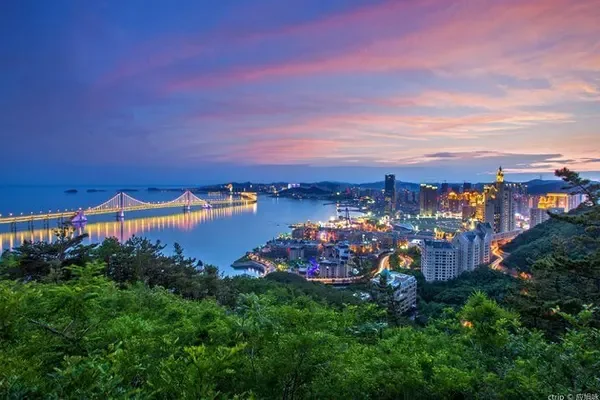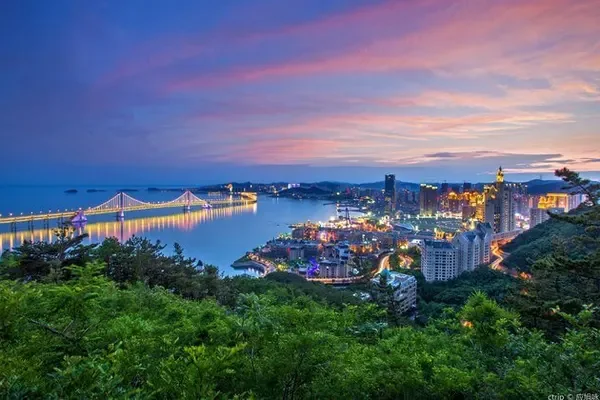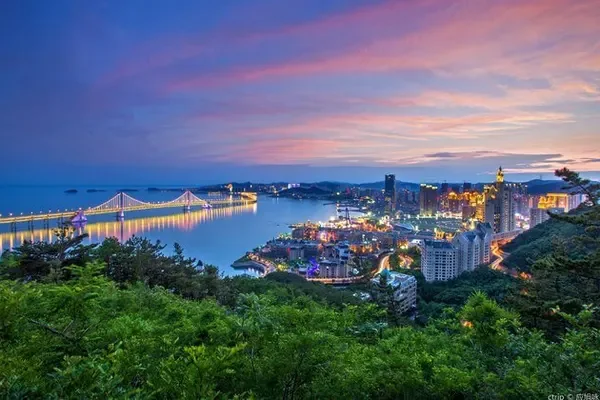The Yellow River has a long history, twists and turns, falls from the sky, and flows for thousands of miles, heading east to the Bohai Sea. The Yellow River in my memory has suffered nine disasters in the past ten years. Whenever the rains increased, the river channel would burst due to silt deposits, flooding their homes and farmland. People in the surrounding provinces would be displaced and suffer heavy losses. "The Yellow River has all kinds of harm, but only one set of wealth". Ningxia is an exception. "The Yellow River is rich in Ningxia" will always be the pride of Ningxia people.
The trip to Ningganmeng first started in Ningxia. Two trips, 10 days before and after, set foot in the five cities of Yinchuan, Wuzhong, Zhongwei, Guyuan and Shizuishan, walk the two famous mountains of Helan Mountain and Liupan Mountain, visit Shuidonggou, Zhenbeibao Western Film City, Helan Mountain Rock Painting, Zhongwei Shapotou, Huoshanzhai Geopark and Shahu Lake are the main scenic spots. Helan Mountain and Liupan Mountain are like two natural barriers in the south and north, and the Yellow River is like flowing blood, protecting Ningxia, the "South of the Great Wall", Ningxia. God's preference for Ningxia is enough to envy the regions that suffer from the Yellow River.
Ningxia is located in the junction zone between the desert and the Loess Plateau in the middle and upper reaches of the Yellow River. It is adjacent to the three provinces of Inner Mongolia, Gansu and Shaanxi. It is long and narrow from north to south, pointed at both ends and wide in the middle. Helan Mountain stretches across the northwest, more than 200 kilometers long from north to south, and 15-60 kilometers wide from east to west. It blocks the eastward movement of the quicksand in the Tengger Desert, weakens the cold wind from the northwest, and becomes a natural barrier for the Yinchuan Plain. The central part of Helan Mountain is surrounded by emerald green peaks and deep valleys. It is the most majestic and precipitous place with beautiful scenery in Helan Mountain. "Helan" in Mongolian means a steed. Standing on the Ningxia Plain and looking west, Helan Mountain is like a galloping horse, full of heroism.
Liupan Mountain is a long and narrow mountain range that runs from southeast to northwest. It is located on the Loess Plateau in the south of Ningxia. Liupan Mountain is a "green island" on the Loess Plateau. The climate is humid, the rainfall is high, and it is easy for trees to grow. There are luxuriant natural secondary broad-leaved forests. The Qingshui River originates from the north and flows northward into the Yellow River. , the east side is the upper reaches of the Jing River, with a drainage area of 45,400 square kilometers, and all waters in the southwest flow into the Hulu River and then into the Wei River. Plays a very important role in moisture mediation.
The Ningxia Plain starts from Shapotou, Zhongwei in the west, ends at Shizuishan Mountain in the north, and obliquely runs through the northwest of Ningxia. The terrain gradually inclines from southwest to northeast. Bounded by Qingtong Gorge, the Ningxia Plain is divided into two parts, the north and the south. To the south of Qingtongxiakou is the Weining Plain, which is small in size and has good drainage and irrigation conditions. The gap in the northern edge of the mountain range is invaded by the quicksand of the Tengger Desert and approaches the Yellow River. A national 5A-level tourist attraction integrating deserts, the Yellow River, mountains, and oases, Ningxia Shapotou National Nature Reserve is located in the west of Zhongwei City and the southeast edge of the Tengger Desert. To the north of Xiakou is the Yinwu Plain between Yinchuan and Wuzhong. The lowest terrain in Ningxia is wider than the Weining Plain, with a smaller slope, vertical and horizontal ditches, rows of trees, and well-developed irrigation agriculture. An important commodity grain base.
The Yellow River originates from the Qinghai-Tibet Plateau and runs for 5,464 kilometers. It flows from west to east through nine provinces including Qinghai, Sichuan, Gansu, Ningxia, Inner Mongolia, Shaanxi, Shanxi, Henan and Shandong, and finally flows into the Bohai Sea. The Yellow River enters Ningxia from Jingtai, Gansu, and turns a beautiful bend at Shapotou on the edge of the Tengger Desert. Like a jade belt, it floats through Zhongwei, Qingtong Gorge, Wuzhong, and Yinchuan, and exits at Mahuanggou in Shizuishan Mountain. The Yellow River in Ningxia has a total length of 397 kilometers, accounting for only one-fourteenth of the total length of the Yellow River. It is the only province among the nine provinces whose entire territory belongs to the Yellow River Basin.
Before the Yellow River entered Ningxia, it flowed down from the snow-covered plateau. Most of the terrain was canyons, with walls standing thousands of feet high, rushing through. Only in some wide valleys did humans divert the Yellow River for irrigation to form oases. After the Yellow River enters Ningxia, the Weining Plain of Yimapingchuan makes the vision of the Yellow River suddenly open. Blocked by the mountains, the Yellow River goes north all the way. This road is the "Ji" shape of the Yellow River. It is also the famous Hetao Plain in China. The Ningxia Plain belongs to the Xitao of the Hetao Plain.
The middle reaches of the Yellow River flow through the unique Loess Plateau in the world. The loess landform is characterized by thousands of ravines. When it rains, the soft loess will be washed into deep trenches. A yellow river of "one bowl of Yellow River water, half a bowl of Yellow River sand" was formed. Part of the sediment carried by the Yellow River was left downstream, and part was transported to the estuary. The continuous accumulation of sediment makes the downstream river bed higher and higher, and the bottom of the river bed is higher than the city's "hanging river". During the high water season, when the dams cannot bear the load, the water of the Yellow River will fall from the sky.
In addition to Ningxia's unique topography, Ningxia mainly benefits from the irrigation of the Yellow River. The Yellow River is located in Ningxia, where the mountains are calm and the water is gentle. The river surface is slightly lower than the ground, and the conditions for diverting the Yellow River are favorable at the right time and place. Since the Qin Dynasty excavated the first Yellow River diversion canal, Ningxia has made continuous efforts in water control for more than 2,000 years. Walking in the Ningxia Plain, the ancient Yellow River diversion canals built in different periods such as the Qin Canal, the Han Canal, the Tanglai Canal, the Huinong Canal, and the Daqing Canal are still flowing, like a mobile water conservancy museum displayed on the land of Ningxia; the diversion canals, drainage ditches, Paddy fields and corn fields can be seen everywhere, rice waves are rolling, and fruit grains are fragrant. Towns, villages and farms named after canals, ditches, bridges, sluices, dams and beaches make the Ningxia Plain a beautiful Jiangnan.
In addition to Shapotou in Zhongwei, the famous tourist attractions in Ningxia include Shuidonggou, Sand Lake, Western Xia Royal Tombs, Helan Mountain Rock Paintings, Volcanic Village Geopark, Liupanshan National Forest Park, and Zhenbeibao West Cinema, etc. Whether these scenic spots are excavated from the perspective of historical relics and archaeology, or created from the aspects of natural environment and geological conditions, or built according to the customs and customs of Northwest China, all of these scenic spots are without exception the influence of mountains, the Yellow River, plains, deserts and humanities on Ningxia. gift. The surging Yellow River favors Ningxia.
(Ningganmeng Travel Diary 2 2020.9.22-10.10 tour, drafted in Nanjing on 10.14)
(The Yellow River flows through the foothills of Xiangshan Mountain, the remaining range of Qilian Mountains)
(Wuzhong Yellow River Tower)
(The Yellow River flows through the mountains)
(Shapotou Yellow River Bend)
(Qingtongxia Yellow River Bend)
(Qingtongxia Hydropower Station)
(Yellow River bridge across the wetland)
(Yellow River wetland where egrets gather)
(Water surface where birds swim)
(Family by the Yellow River)
(Shuidonggou Ming Great Wall Peak Fire Terrace)
(Shuidonggou Hongshan Lake Great Wall)
(Majestic Helan Mountain)
(Helan saliva pass)
(Helan Mountain Rock Paintings)
(Looking back for a moment)
(happy moment)
(North Wudang)
(Ancient Road Xiaoxi Liupan Mountain)
(Yellow River Observation Deck)
(Rain and Mist Sand Lake)
(Volcano Village Sphinx)
(The strange four-horned sheep in Shuidonggou)



